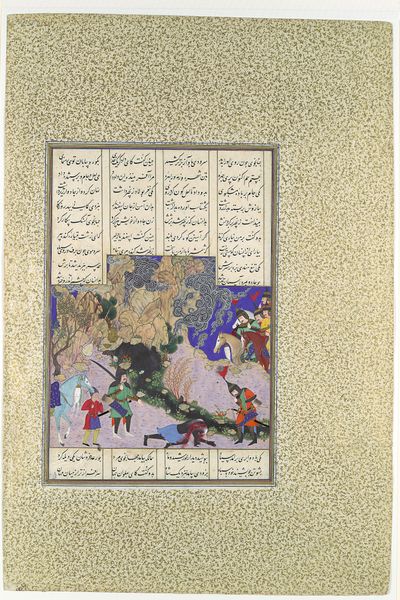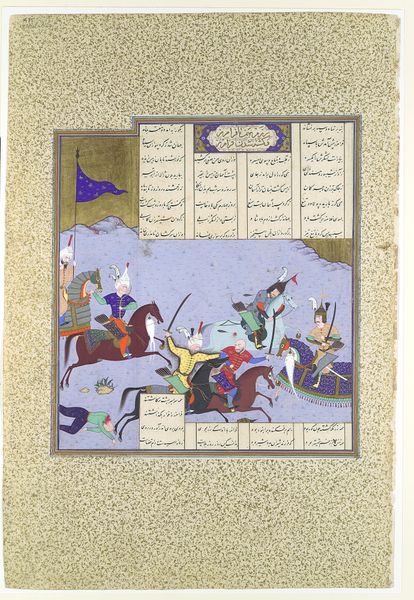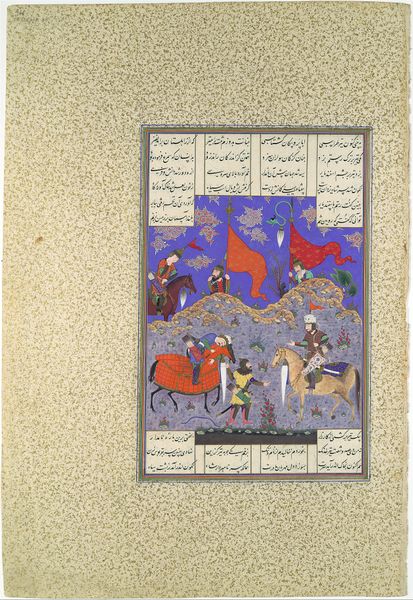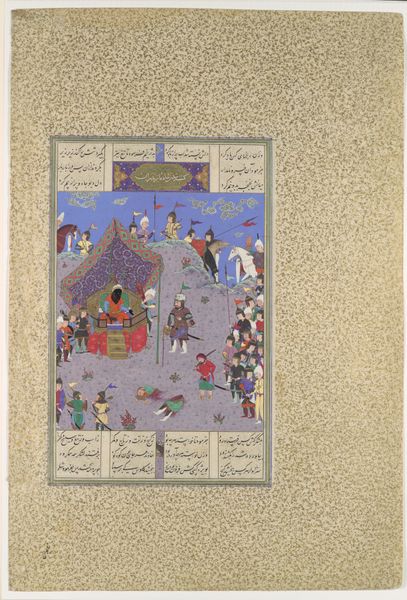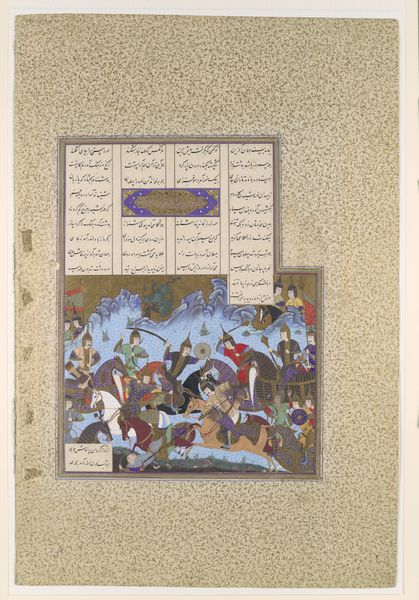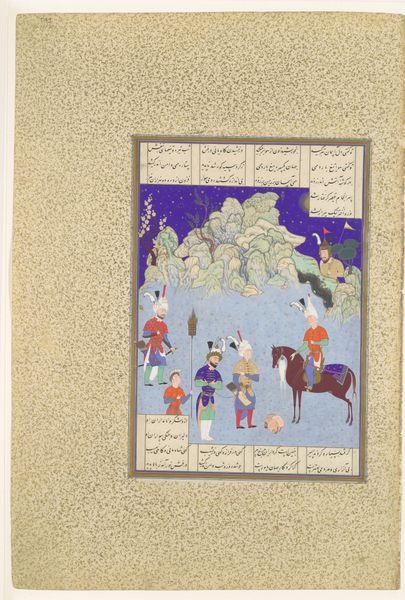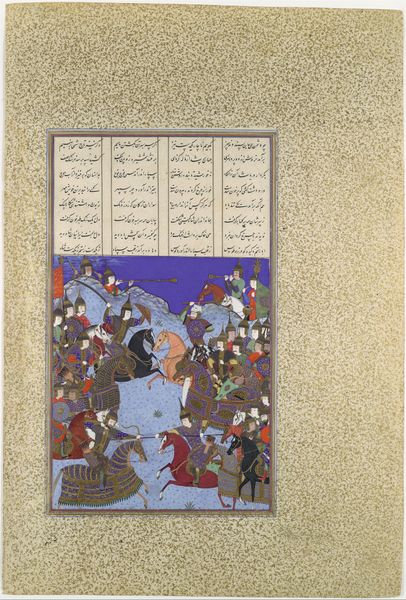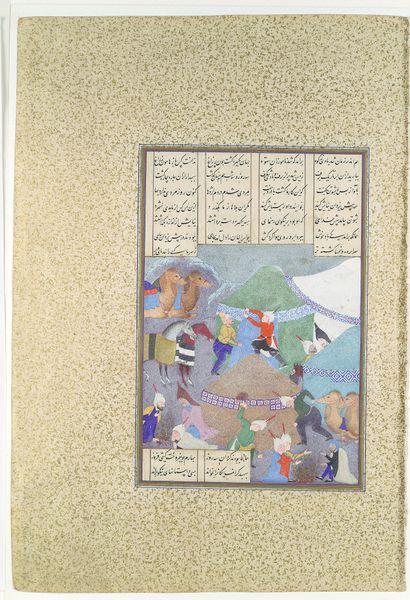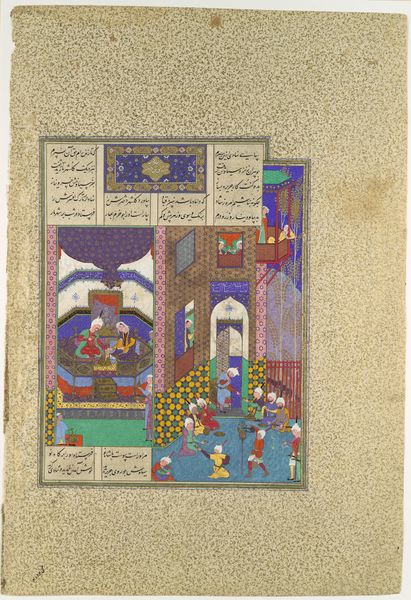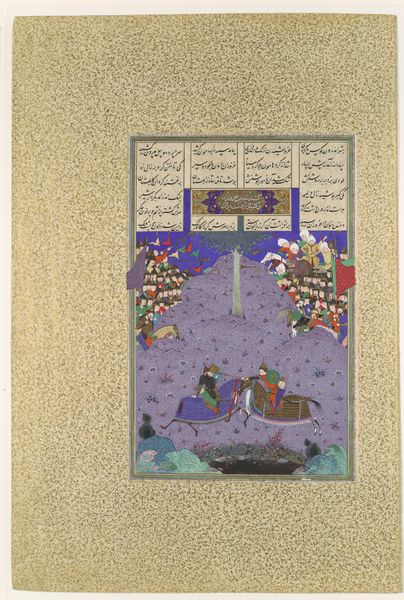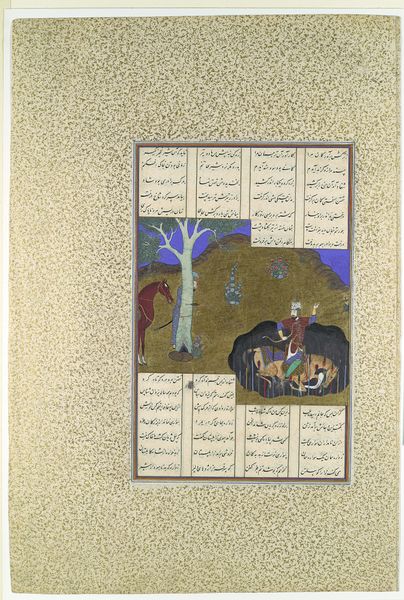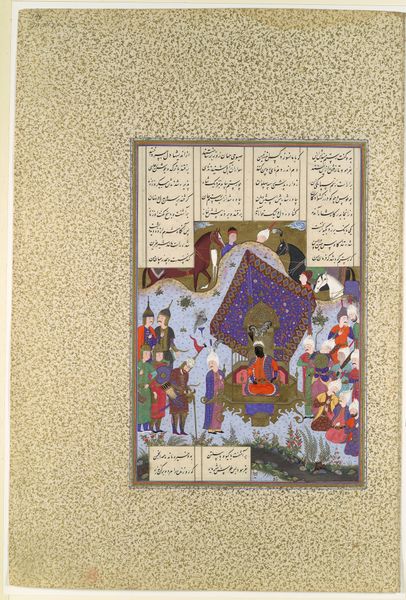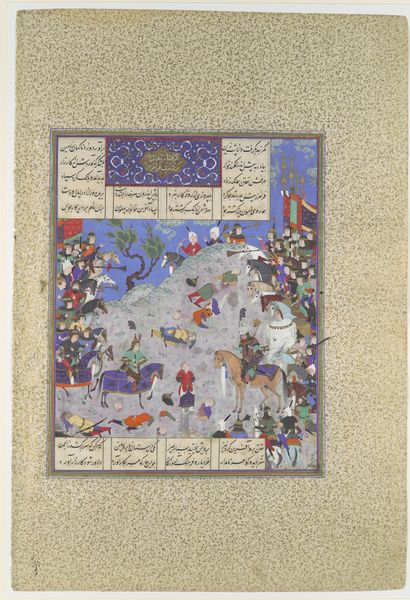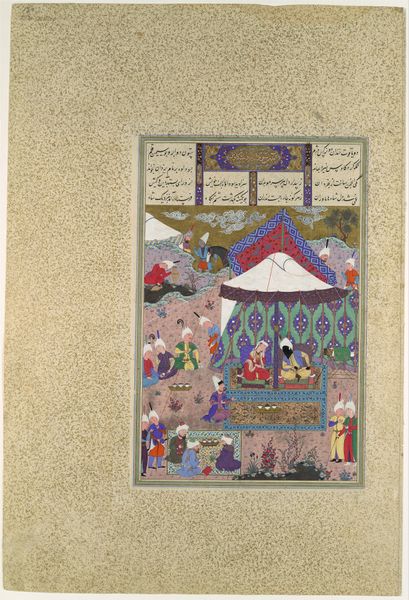
"Kai Kavus Ascends to the Sky", Folio 134r from the Shahnama (Book of Kings) of Shah Tahmasp 1500 - 1555
0:00
0:00
painting, gouache, textile, ink
#
narrative-art
#
painting
#
gouache
#
landscape
#
textile
#
figuration
#
ink
#
geometric
#
islamic-art
#
history-painting
#
miniature
Dimensions: Painting: H. 11 3/16 in. (28.4 cm) W. 7 3/16 in. (18.3 cm) Page: H. 18 5/8 in. (47.3 cm) W. 12 9/16 in. (31.9 cm) Mat: H. 22 in. (55.9 cm) W. 16 in. (40.6 cm)
Copyright: Public Domain
This Persian miniature from the Shahnama, depicts Kai Kavus's ambitious, yet doomed, attempt to fly to the heavens. Dominating the scene is the king upon his mobile throne, a symbol of power and aspiration. Note the eagles, strategically placed—they are not mere decoration. Throughout history, birds in flight have been associated with transcendence and the soul's journey. Think of the Egyptian Ba bird or the Roman apotheosis scenes with eagles carrying emperors to the heavens. Kai Kavus harnesses this symbolism, using the eagles to lift his throne, a motif resonating with humanity's timeless desire to overcome earthly limitations. However, the fallen figure below hints at the hubris of such endeavors. It's a recurring theme: the Icarus myth, the Tower of Babel. These narratives reveal a collective anxiety about overreaching ambition and the inevitable fall that follows. Here, the vibrant imagery engages us on a deeply human level. The image is a reminder of how symbols persist, echoing across cultures and epochs. It is a testament to our enduring fascination with flight and the perils of unchecked ambition.
Comments
No comments
Be the first to comment and join the conversation on the ultimate creative platform.
